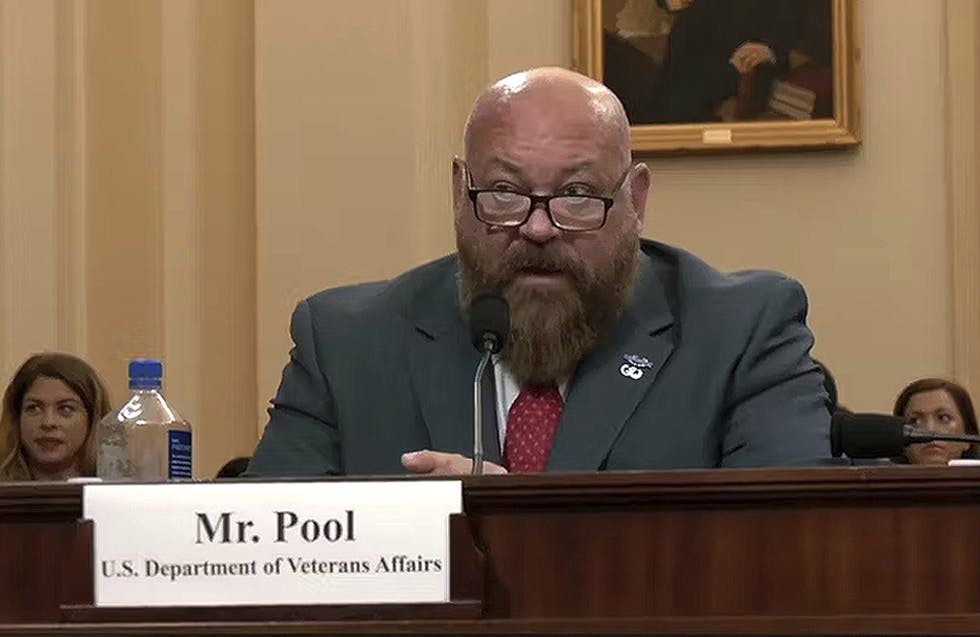Effective Cloud Governance Balances Innovation, Security
ULA and AWS leaders discussed strategies for secure cloud adoption, emphasizing effective permissions to balance innovation and security.

Security leaders from United Launch Alliance (ULA) and Amazon Web Services (AWS) highlighted how effective permissions and targeted policies are enabling secure cloud adoption in regulated environments during AWS re:Invent in Las Vegas, Nevada.
By addressing challenges like limited cloud knowledge and implementing new tools like identity access management (IAM), ULA is balancing innovation with security, while maintaining flexible, evolving governance strategies.
ULA is still in the early stages of it’s cloud journey, developing its Cloud Center of Excellence (CCoE) roughly two years ago. As the organization continues to build out its cloud strategy, ULA Cloud Security Architect Jeff McClain said his focus is on balancing security and innovation.
Bryan Gunter, senior aerospace consultant at AWS, highlighted how ULA and AWS leveraged three key policies to fit both security and development team needs.
- Service control policies set guardrails for the enterprise.
- Identity policies, like IAM, define permissions for users based on the roles and actions.
- Boundary policies create a “safe zone” for developers to test freely, without compromising security.
“The idea is that developers come into our onboarding account, they play around … while they are performing their actions, cloud trail is capturing what they’re doing,” said Gunter. “Then we can use AWS IAM access analyzer to determine what did they actually do? And how can we actually determine our policies?”
ULA also took inventory of cloud adoption roadblocks. McClain noted that overall, there was a lack of knowledge about cloud services. The diverse workforce – ranging from software engineers to technicians – also posed a problem when defining least privilege access. ULA began discussions with users and team leads to examine current policies and gauge how to best approach the problem.
“I thought I could standardize this and kind of get back to the basics, [but that] really was program to the problem that the permissions were either far too broad … or they were just so tight, so dialed in that every few weeks … they were having to come in and rework those costs.”
Implementing the new policies required McClain and his team to develop both technical and non-technical solutions. For instance, the CCoE represented a key non-technical component necessary for ULA to adopt an effective and functional permissions mindset.
According to McClain, service approval processes – though not a new concept – were foundational and among the most critical elements of implementing these policies and frameworks.
“It’s basically anything and everything we can think of that we need to implement, put in place so our users don’t have to think about it and security doesn’t have to think about it,” said McClain. “You really do have to understand the controls you have around each of these services.”
Cody Hartman, senior software engineer at ULA, agreed that effective governance and strategy are crucial to the software tooling process. Policies are often manually written and deployed. Hartman said creating future policies will be easier with the IAM Access Analyzer, which helps establish roles and policies based on what tools developers use.
“As developers integrate, we need to as well. They may add new services or remove services, and so those policies are essentially a living document,” said Hartman. “They’re not going to stay completely stable.”
This is a carousel with manually rotating slides. Use Next and Previous buttons to navigate or jump to a slide with the slide dots
-

VA CIO Targets Modern IT and Smarter Workforce Alignment
Agency leaders told lawmakers they are focused on trimming legacy systems and restructuring its workforce to streamline operations.
3m read -

Pentagon's $200M AI Contracts Signal Broader Effort to Transform Talent
The Army is leveraging Silicon Valley, reservist programs and new hiring strategies to integrate critical digital skills in its ranks.
5m read -

Inside DOD’s Push to Grow the Cyber Workforce Through Academia
Diba Hadi gives her first interview since becoming principal director of the DOD’s Cyber Academic Engagement Office.
15m listen -

Generative AI Demands Federal Workforce Readiness, Officials Say
NASA and DOI outline new generative AI use cases and stress that successful AI adoption depends on strong change management.
6m read -

The Next AI Wave Requires Stronger Cyber Defenses, Data Management
IT officials warn of new vulnerabilities posed by AI as agencies continue to leverage the tech to boost operational efficiency.
5m read -

Federal CIOs Push for ROI-Focused Modernization to Advance Mission Goals
CIOs focus on return on investment, data governance and application modernization to drive mission outcomes as agencies adopt new tech tools.
4m read -

Data Transparency Essential to Government Reform, Rep. Sessions Says
Co-Chair of the Congressional DOGE Caucus Rep. Pete Sessions calls for data sharing and partnerships to reduce waste and improve efficiency.
5m read -

DOD Turns to Skills-Based Hiring to Build Next-Gen Cyber Workforce
Mark Gorak discusses DOD’s efforts to build a diverse cyber workforce, including skills-based hiring and partnerships with over 480 schools.
20m listen -

Trump Executive Order Boosts HBCUs Role in Building Federal Tech Workforce
The executive order empowers HBCUs to develop tech talent pipelines and expand access to federal workforce opportunities.
3m read -

DOD Can No Longer Assume Superiority in Digital Warfare, Officials Warn
The DOD must make concerted efforts to address cyber vulnerabilities to maintain the tactical edge, military leaders said at HammerCon 2025.
4m read -

Marine Corps Operation StormBreaker Slashes Software Delivery Timelines by 17x
New program aims to deliver critical digital capabilities to warfighters at the "speed of relevance" by overhauling traditional processes.
4m read -

Tracking CIOs in Trump's Second Term
Stay informed on the latest shifts in federal technology leadership as new CIOs are appointed and President Trump's second term takes shape.
6m read
















